Trending
Opinion: How will Project 2025 impact game developers?
The Heritage Foundation's manifesto for the possible next administration could do great harm to many, including large portions of the game development community.
As if to commemorate its first birthday, "Journey" teaches me more than I could ever hope for. This piece looks at the mechanisms behind the great impact of one small game.

Suppose we wandered into a house of mirrors that could bend time instead of light, and in it found a corridor whose reflections would show us the games we played through a series of their most memorable moments. What would we see?
An ancient behemoth poised to devour the world, slain with a legendary sky-rending spell. A ruthless deity for whom suffering is the only virtue, destroyed by the implements of his brethren. A greed-driven regime that murdered your loved ones, annihilated piece by piece. An anonymous opponent whose head filled your cross-hairs, while yours sat in the sights of another.
Nothing is wrong with these moments; I love a good thrill ride as much as the next guy. But if we look at the actions we take in games, whether by choice or coercion, there is something a little familiar, even repetitive, about many of them. You might recall from my post on Dishonored, in which I mention how shaken I was when I made Corvo slaughter everyone at a party. Players of Spec Ops: The Line have reported similar sentiments. It's in light of this and my recent playthrough of Journey that I asked myself --
Wouldn't it be great if there were more games that aimed not to shock us with the heights of our own virtual cruelty, but to surprise us with our capacity for kindness and self-sacrifice?
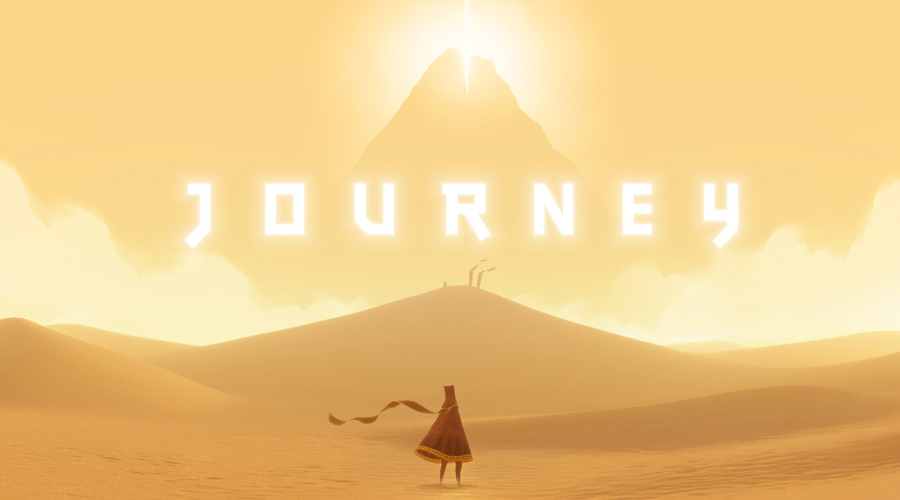 Journey | thatgamecompany
Journey | thatgamecompany
I needed to find out how it is that Journey got me to that point, so I took a closer look. My usual disclaimer: spoilers abound.
1. LUDONARRATIVE RESONANCE
'Who am I?' 'Where is this?' 'Why am I here?' The standard questions we ask at any game's outset mirror the avatar character's own mindset upon being born. The Brownhood knows nothing, just as we do. In this writer's opinion, a true tabula rasa is the best and only way to do the 'silent protagonist' trope. Amnesia premises risk pulling apart player and player-character at the moment of epiphany, while beginning as nothing sidesteps that altogether.
When the Brownhood and I first see the mountain, we both pause in sheer awe. When we sit before the ghosts of Whitehood Elders as they tell us of a history-turned-myth, we both pledge all our attention. If you take Austin Wintory's score as an ever-shifting portrait of the Brownhood's emotions -- the audio is, after all, highly responsive to the player's behavior -- then when we surf the golden sands at sunset through the ruins of an unknown city, we're both overcome with the same sense of elation and wonder. Rooting player and avatar in shared experiences is part of the reason why Journey is so immersive.
2. MOOD AND ATMOSPHERE
Journey's prologue/tutorial area establishes a baseline of emotion, which is crucial for a game designed with a specific emotional range in mind. Whatever you were doing in the minute before you started a new game, it loses all relevance in the minute after. I attribute this in part to the crescendo in Wintory's starting track "The Call", a surge-and-dissipate that cleanses our palette. But of course, there's more.
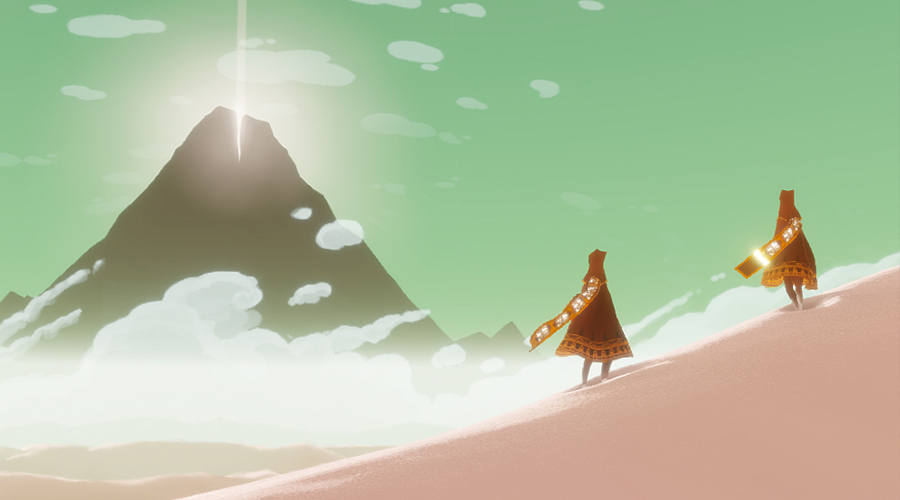
If this level communicates one idea ahead of all others, it is the understanding that we are alone. The Brownhood is a small, frail, fluttery silhouette in an endless landscape that is equal parts harsh and breathtaking -- a black dot in a sea of gold. We pass a hundred graves. If we sing to one, we reveal the faint glow of a glyph hauntingly similar to ours. What could divide us more than death?
The payoff hits when we enter the first real level, the Bridge, and we see the figure in the light (which I believe only appears when we're connected to the network). Entering the social arena with a sense of loneliness primes players to be more receptive to cooperation and the presence of others. That feeling you get when you find out you're not alone -- there's just nothing like it.
3. METHOD OF DELIVERY: VISIONS AND MURALS
One couldn't argue that utilizing images as a substitute for language in disseminating exposition is a new approach, but that doesn't detract from its effectiveness. Clarity, engagement, moderation, pacing, and fitting with the aesthetic are all criteria met by the developers' use. When we come to expect these images at each level's end, the story takes a turn and bridges past to present. We find out that we're just one thread in an ancient tapestry.
An incredibly powerful moment occurs in the Tower before the snow, when a Whitehood Elder shows us the path we have walked in history, prophecy, and destiny. But it doesn't show our triumph; it shows us only on the brink of trying. What's most striking in this last section is the Brownhood's pose, as if to imply that our trials ahead will be so arduous, so devastating, yet so imperative that we will not simply fear. We will bow.
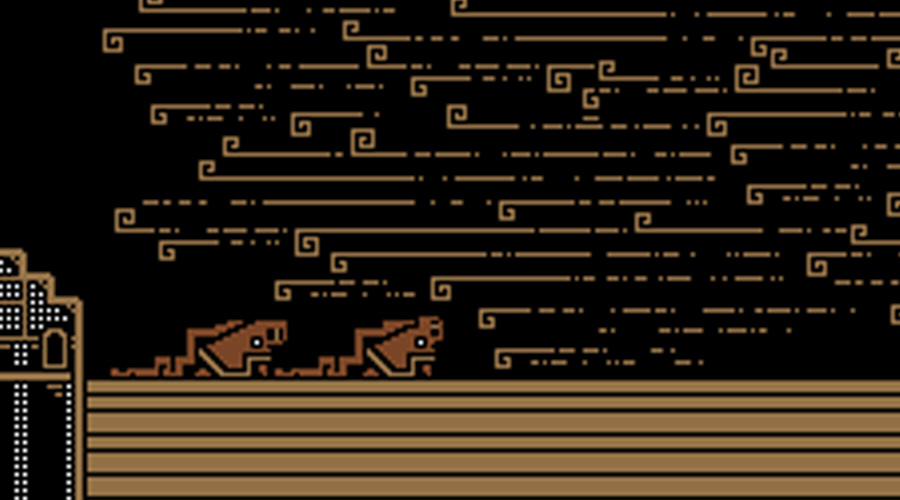
And we will be humbled by the majesty of the mountain.
4. GAMEPLAY
On a universal scale, the advantages of partnering up seem minor and few. But for the focused mechanics in Journey, the magnitude becomes extraordinary. Touch ignites a light that fills the scarf, allowing you to travel faster and further. Together, you run and fly; alone, your steps feel heavy. Calls gain the same function and also become a way to communicate, not just to release living cloth from their bonds. These effects assign value to the behavior and players quickly internalize it.
Building on this relationship is a moment hidden in the merciless blizzards of the mountain. Our voices weaken; our scarfs wither; our color fades. Suddenly our newfound joys of basic existence -- the very building blocks of our avatar's identity -- are threatened, battered, and eventually killed. Yet long after the winds tear our scarves to shreds, after touch no longer creates a light to stay the frost from our bodies, after our most vigorous calls shrivel into a whimper most feeble, how many of us during that final ascent -- even knowing that we approached death -- did not stay huddled together?
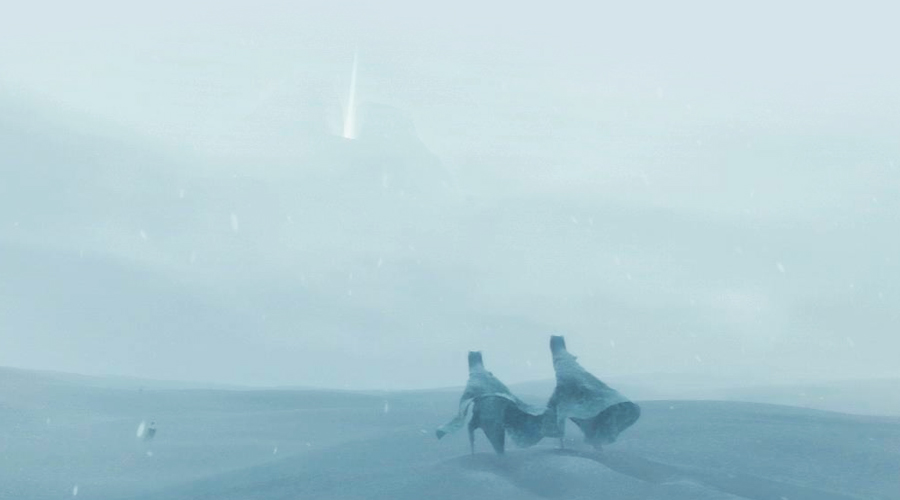
This is the ultimate test. When an act becomes meaningless in the system, a participant is supposed to cease repeating it unless a different source provides a new incentive. In this case, it's a sentiment from real life. A connection.
thatgamecompany's gambit lives or dies by this threshold. And not only does it live every single time, it flourishes. Between two people, the game forges a bond strong enough to persevere through the experience of a hardship. This is why so many people respond to Journey. It gives you something real to take with you even after you walk away.
5. THE CATHARSIS OF ENDINGS
The rest is history. With a helping hand from the Whitehood Elders, we blast through the storm in what feels like the most liberating, transcendent flight of all. All at once, our impediments vanish -- a crucial element for any story's denouement. Slowed movement; oppressive winds; the distance keeping us from our goal. Even our very mortality, Chen reveals, vanishes. No longer do we glide. We soar. And when we reach the mountain's luminous peak, the game simply leaves us with as much mystery as it came with all the freedom to interpret.
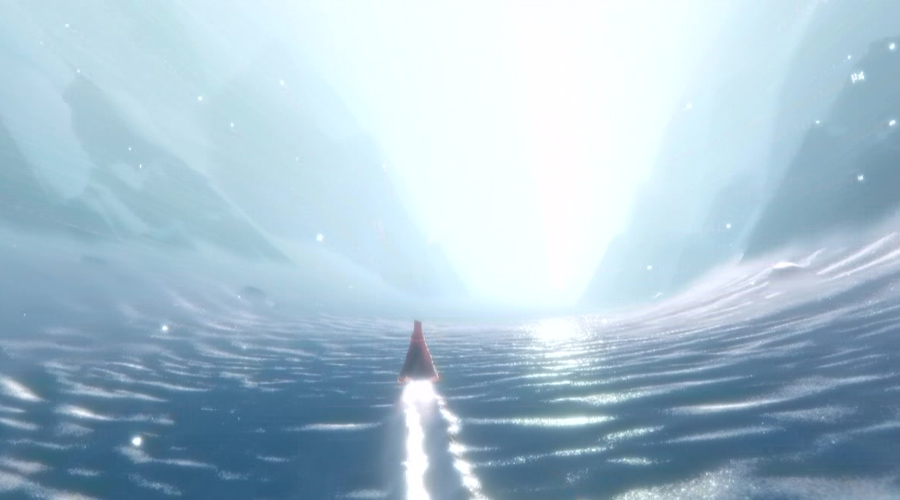
But what does any of this really have to do with the rhetorical question I posed in the first half? Well...
6. EMERGENT PLAY & AN EPIPHANY
Whether implicit or explicit, one of the rules of Journey is that you travel with a complete stranger, with whom you forge a new bond out of anonymity. To break this rule, or any, is to find/create emergent play. It happens in this game often enough for people to ask how to do it. I was one of them.
You see, I cheated in Journey. Not the first time I played it a year ago, or the many times since. I cheated once last week when I entered the sands with an old friend from college whom I hadn't seen since graduating in 2011. It wasn't too difficult to pull off, in spite of a 12-hour time difference and a bandwidth-exhausted internet, but we did it. While playing, we stayed chatting on Facebook on and off, and it was like old times.
My question came out of a specific moment from that play session, along the second icy slope over which a serpent asserts dominion. I led the way; it was her first journey. Ever-cautious, we were cover-hopping between the snow-covered dragon bones littered across the snow. But we were too cautious; we left too late and before we could find safety, the dragon's gaze darkened to red and fell down on us like a headsman's ax.
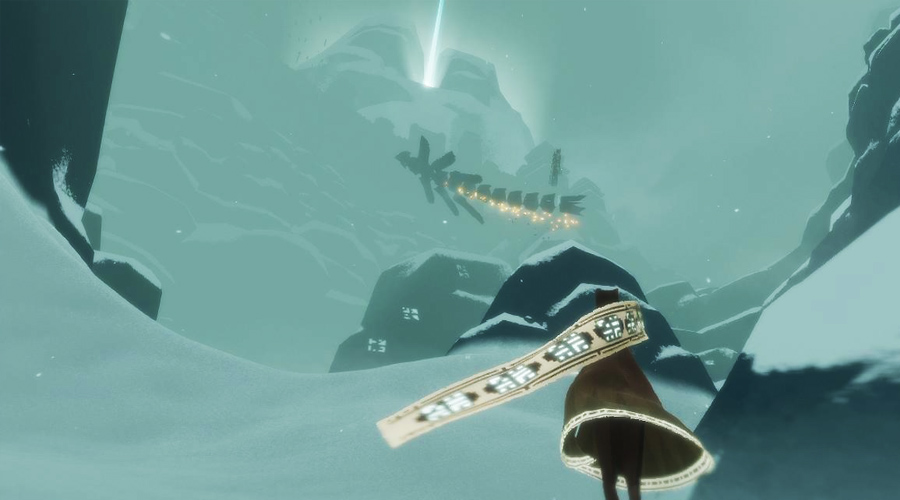
I jumped. I shouted. I did everything I could to seize the beast's attention. And I spared my friend its jaws.
CONCLUSIONS
Maybe that doesn't seem significant. Either way, let me state: I didn't write fifteen-hundred words to build up to how wonderful a person I am. For one, when I think about it now, it makes more sense that a serpent's AI targeting finds one object and stays on it. If it 'went' to me, then it was always on me. If this is the case, the opportunity for this one altruistic act would probably be my only fathomable suggestion for Journey: allow travelers to call a serpent's attention away from their partners.
The other, more pertinent reason why I'm not a good person is because when I was faced with a similar situation a few days later with a stranger, all I did was turn and watch them get eaten.
But I digress. The question came to me because Journey stands as one of the few systems that has made me question myself not as a gamer, or an enthusiast of a particular genre, but as a person. I had always known that I wasn't that great a friend, but maybe I'm not as bad as I think. On the other hand, I had always considered myself markedly kind toward strangers, yet that turned out not to be true either.
Somehow, I played a game and got to know myself better for it. How many games can I say that for?
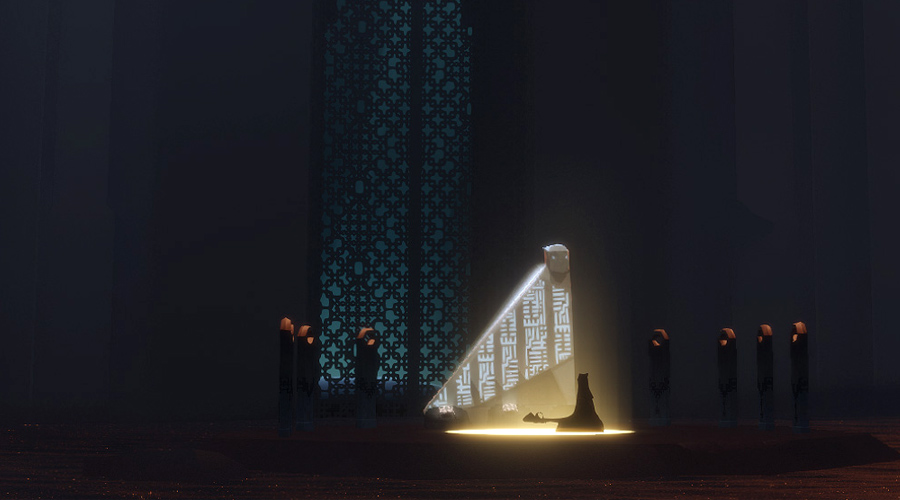
That's why among all the notes in all possible emotional spectra, I wish we had more games that tapped into this one: the unsung spectrum of kindness. For all its visual beauty and its emotional resonance, Journey makes an added effort to challenge our minds, our sense of self. What does it mean to be a friend? What does it mean to show compassion? The questions raised in Journey are the ones too rarely asked.
I get sad sometimes when I think about walking the sands again because of the short, bittersweet, unchanging conclusion. But when I do begin, I forget all that and remember what I think is the true message of Journey --
A message I wouldn't dare write here because it is one everyone absolutely deserves to discover on their own.
Read more about:
BlogsYou May Also Like